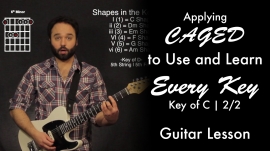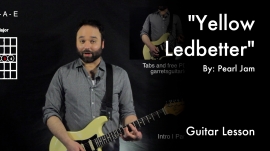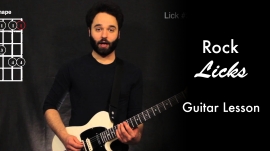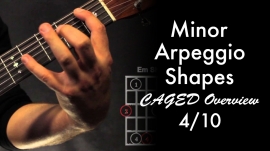While these are less used than my previous “E” and “A” Shapes, it wouldn’t be complete without including these G – C – D Shapes. What’s great about looking at the chords this way is that we can see theory actually in use! A lot of times you can look at all these chord/arpeggio charts and feel like you have an infinite amount of work ahead, but if you start looking at these “shapes” less in terms of these arbitrary finger placements and more so a way to incorporate all the chord tones necessary to ensure the chord is complete it gets easier.
This is a great way to start visualizing our chord tones. Good thing is that the “D” shape is just like our “E” and “A” Shape… just minus a string. The “G” and “C” shapes are related as well!
The big takeaway of this lesson is:
G Shape:
1 – 3 – 5 – 1 – 3 – 1
C Shape:
1 – 3 – 5 – 1 – 3
D Shape:
1 – 5 – 1 – 3
To build different Triads we just have to physically move certain chord tones to their appropriate places… regardless of what the actual note is!
Minor: 1-b3-5
Diminished: 1-b3-b5
Augmented: 1-3-#5
To work through Arpeggios we just have to ensure everything is always in the 1-3-5-1-3-5 order, which is why the “C” shape is basically already there and why we have to add a note to our “D” Shape.
Dig!
-Related Lessons-
:13 – Visualize Chord Tones – E and A Shapes | Triads
:24 – Major CAGED Chord Shapes | CO 1/10
:29 – Building Chords?! | UGT 2/8
1:39 – Major CAGED Arpeggio Shapes | CO 3/10
4:35 – Visualize Chord Tones – E and A Shapes | Triads
PDF’s
Visualize Chord Tones | G-C-D | Triads PDF, CAGED Chord Shapes, CAGED Arpeggio Shapes, Theory




